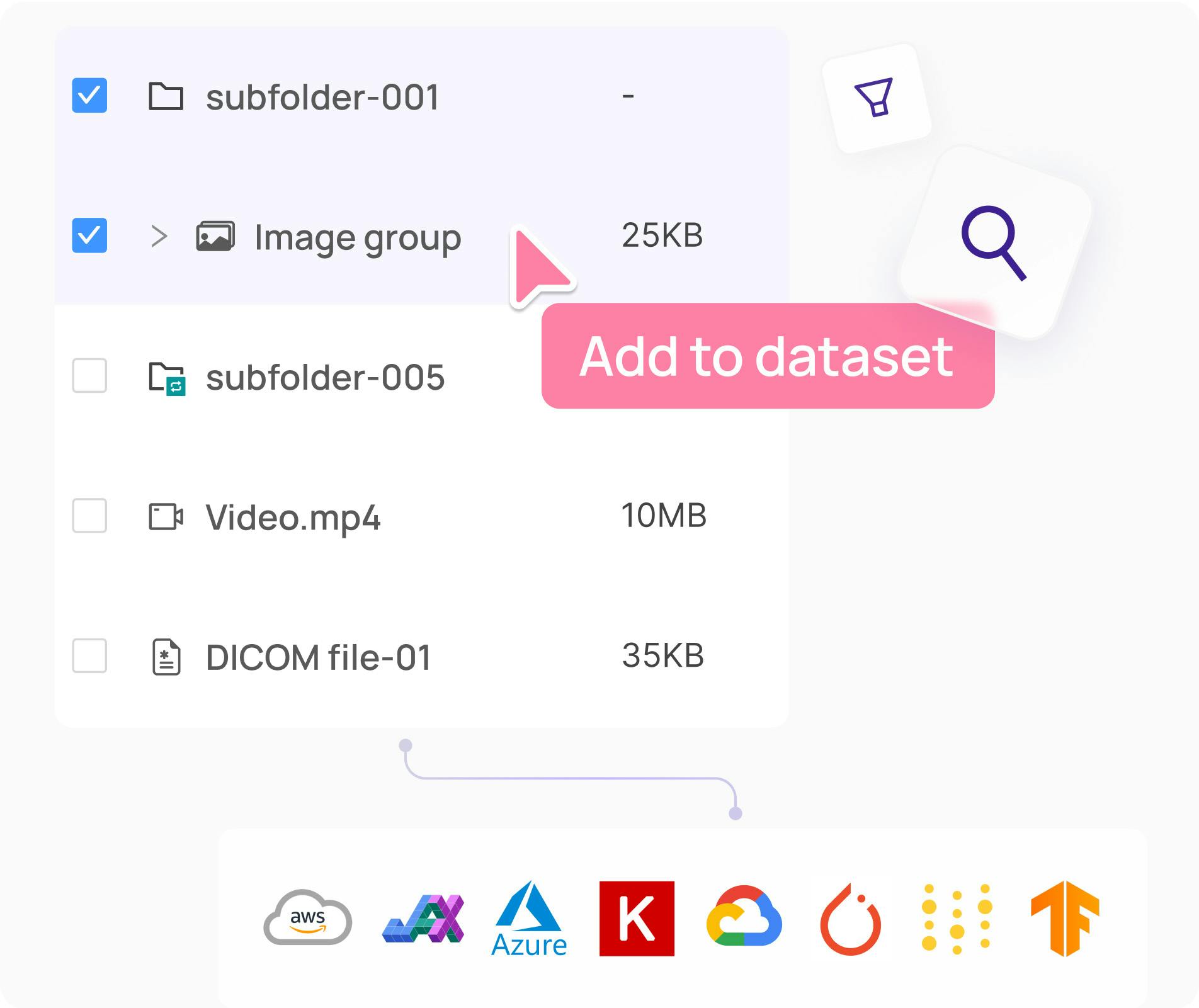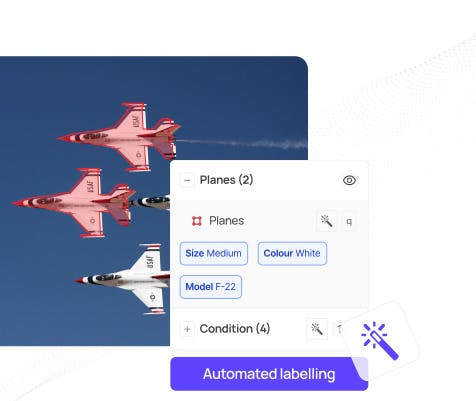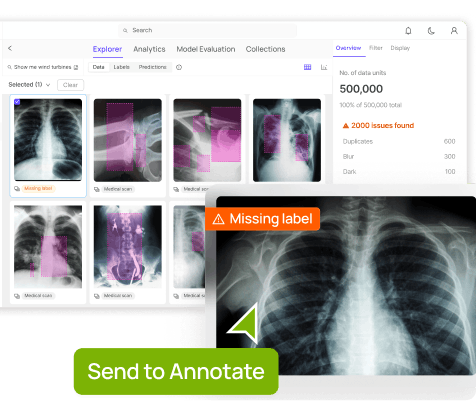Contents
The Challenge With Variable Environments
The True Bottleneck: Curating and Labeling the Right Data
Architecture Trade-Offs That Matter for Deploying Models on the Edge
How to Create a CV Data Pipeline
5 Ways to Build Resilient CV Systems
Want to Build Computer Vision That Actually Works in the Real World?
Encord Blog
How to Deploy Computer Vision Models in Variable Conditions
5 min read

In a recent conversations with leaders in Ag-Tech and robotics, we have dug into a common but often under-discussed challenge in applied AI:
How do you build computer vision models that can actually perform in the real world?
From sun glare and dusty conditions to shaky camera mounts and wildly varying plant types, the AgTech and robotics fields present some of the harshest environments for deploying AI. But these challenges are faced across industries in which conditions can vary in both training and deploying models.
In this article, we are going to explore how you can curate edge-case data to build models that perform in the real-world.
The Challenge With Variable Environments
Let’s start with the baseline problem: while CV models can be trained and evaluated in ideal conditions with clean datasets, balanced lighting, and minimal noise, many are not being trained on the right data. In turn, as soon as those models leave the lab, things fall apart fast.
To take the AgTech example, AI systems are forced to deal with:
- Inconsistent lighting: clouds rolling over, shadows from crop canopies, backlight during golden hour
- Dust, water, and vibration: from machines plowing soil or navigating uneven terrain
- Sensor instability: shaky footage, motion blur, camera obstructions
- Massive biological variation: different plant species, growth stages, weed types, soil textures, and even pest interference
That’s not just a harder dataset, but rather a completely different operating context.
A model that performs with 92% accuracy in synthetic tests may suddenly hit 60% when exposed to edge cases, like backlit weeds partially covered by dust, in motion, and with similar coloring to the surrounding soil.
This is why robustness matters more than theoretical accuracy. In the wild, your model needs to handle variability gracefully, not just perform well in ideal conditions.
The True Bottleneck: Curating and Labeling the Right Data
If there’s one consistent theme across all the teams we’ve worked with in AgTech and field robotics, it’s this: while having an AI data labeling pipeline is crucial to model success, labeling more data isn’t always the answer. Labeling the right data is key to ensure that variability in the real-world is accounted for while maintaining maximum efficiency across the AI data pipeline.
Annotation Fatigue Is Real
Labeling thousands of field images, with weeds, crops, shadows, and motion blur, is time-consuming and expensive. For most teams, annotation quickly becomes the bottleneck in model iteration. Even more frustrating: you may end up labeling hours of video or thousands of images that add little to no model improvement.
So how do the best teams tackle this?
Curate for Edge Cases, Not Volume
Top-performing computer vision pipelines focus on edge-case sampling, such as:
- Occluded or partially visible objects (e.g., items behind obstacles, people partially out of frame)
- Low-light, high-glare, or overexposed conditions (e.g., poorly lit warehouses, shiny surfaces, backlit scenes)
- Uncommon object variations or rare classes (e.g., damaged products, rare defects, unusual medical cases)
- Motion blur or shaky footage (e.g., handheld cameras, moving platforms, vibration-prone environments)
These are the moments that hinder model performance in the real world and improving on these has an outsized impact on real-world performance.
How Encord Helps Teams Go Faster
This is exactly where Encord fits in, as the data engine for teams building robust computer vision systems across industries like AgTech, robotics, healthcare, logistics, manufacturing, and more.
Encord gives you the tools to focus your effort on the data that actually improves model performance. Here’s how:
Curate Smarter with Visual Search & Metadata Filters
Not all data is equally valuable, especially when you're looking for edge cases. Encord lets you:
- Search across metadata such as lighting conditions, blur, object class, and camera source
- Tag and retrieve examples with visual search, identifying hard-to-label or rare cases with ease
- Organize your dataset dynamically based on failure patterns, geography, device, or any custom field
Cluster & Surface Edge Cases with ML-Powered Embeddings
Finding the “long tail” of your dataset is hard. Encord helps by:
- Clustering visually similar images using learned embeddings
- Letting you surface diverse and representative samples from across the distribution
- Identifying outliers and edge cases that models tend to miss or misclassify
Label Faster with Automation & Integrated QA
Once you’ve found the right data, annotation needs to be fast and accurate. Encord delivers:
- Multimodal annotation tools for image, video, LiDAR, 3D, documents, and more
- SAM-powered segmentation and pre-labeling tools to accelerate pixel-perfect annotations
- Custom labeling workflows with built-in QA layers, reviewer roles, and audit logs
Close the Loop from Model Evaluation to Data Re-Labeling
With Encord, your annotation platform becomes part of the ML feedback loop.
- Use model predictions to flag weak spots or uncertain examples
- Automatically route failure cases back into labeling or review queues
- Measure annotation quality and track the impact of new data on model performance
Instead of randomly sampling 10,000 images, teams can focus annotation on the 1,000 examples that actually move the needle.
Architecture Trade-Offs That Matter for Deploying Models on the Edge
Once you've built a strong, diverse dataset, the next big challenge comes during deployment, especially when you're running models on edge devices, not cloud servers.
In many real-world scenarios, you’re deploying to:
- Embedded systems in autonomous machines, vehicles, drones, or mobile devices
- On-premise edge hardware in environments with limited power, compute, or connectivity
- Ruggedized environments with physical challenges like motion, vibration, dust, or poor lighting
That makes model selection and architecture choices absolutely critical.
How to Create a CV Data Pipeline
Successful computer vision teams don’t treat model development as linear. Instead, they understand that they need a continuous feedback loop.
- Deploy a model in production
- Monitor for failure cases (missed weeds, misclassifications)
- Capture and curate those cases
- Retrain on newly labeled data
- Evaluate and redeploy rapidly
The goal is to optimise data caution, model training and model evaluation. This in turn, will improve model performance exponentially faster.
This is especially critical for teams deploying physical AI (like robotics) where safety, efficiency, and explainability are all non-negotiable.
5 Ways to Build Resilient CV Systems
Based on our experience with teams across robotics, AgTech, and logistics, here are 5 principles that help CV teams succeed in unpredictable environments:
1. Design for Diversity from Day One
Don’t just collect clean daytime images, gather dusk, glare, partial occlusion, and motion blur examples upfront. A diverse dataset prevents downstream surprises.
2. Prioritize Edge Case Labeling
Don’t spread your labeling budget thin across all data. Focus your annotation effort on high-impact edge cases that cause model errors.
3. Build Small, Fast, Resilient Models
Your model doesn’t need to be state-of-the-art. It needs to work reliably on real hardware. Optimize for latency, size, and stability.
4. Monitor Contextually
Aggregate metrics can be misleading. Monitor performance by environmental condition (e.g., lighting, terrain, sensor angle) to detect hidden weaknesses.
5. Plan for Iteration, Not Perfection
You won’t get it right the first time. Build pipelines, not one-off solutions. Make retraining and annotation easy to trigger from real-world feedback.
Want to Build Computer Vision That Actually Works in the Real World?
If you’re working on robotics, AgTech, autonomous inspection, or any other field where computer vision needs to work in variable, high-noise environments, we’d love to hear from you.
At Encord, we help teams:
- Curate and label edge-case data faster
- Build datasets optimized for robustness
- Evaluate and iterate models through tight feedback loops
- Deploy high-performing CV pipelines with compliance and scale in mind
Explore the platform
Data infrastructure for multimodal AI
Explore product
Explore our products


